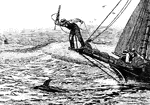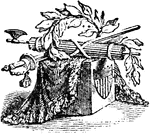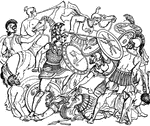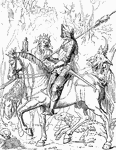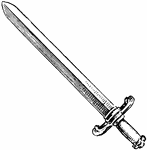
Greek soldier
"The early Greeks used a very short sword, as may be seen from the preceding cut. The ancient Homeric…
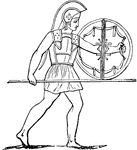
Greek with shield
"In the Homeric times, the Greeks used a belt for the sword, and another for the shield. These passed…

Characters
Characters of the Native Americans. The eight figures in the upper row, with hats on, and with muskets…
Rendering honors
In rendering honors with the troops officers execute the first motion of the salute at the command present,…

Drawn Saber
"When arms are brought to the order the officers or enlisted men with the saber drawn order saber."…
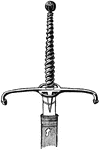
Claymore
A name given to a broadsword made to be used with one hand, and closely resembling the cuirassiers's…

Marching with Saber
"In marching in double time the saber is carried diagonally across the breast, edge to the front; the…
Sword
A type of sword called cleddyo. Usually made of bronze and having a "leaf shape" form. the tounge being…
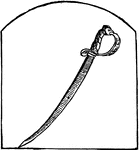
Sword
An offensive weapon having a long, strong, and usually harp-pointed blade, for cutting or thrusting.
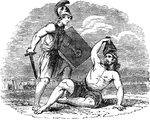
Codrus slain
"Determined to save his own country at the expense of his own life, Codrus disguised himself in a peasant's…
Saber
A sword with a broad and heavy blade, thick at the back, and a little curved toward the point; a cavalry…
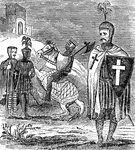
Chivalry and knight-errantry
"The chivalry of the gothic nations began in the woods of Germany. No youth was then permitted to assume…

Swordfish
A family of spinyrayed fished allied to the mackerels. They attain a length of fifteen feet, and have…
Dagger
An edged and pointed weapon for thrusting, shorter than a sword, and used, commonly in connection with…
Dagger
An edged and pointed weapon for thrusting, shorter than a sword, and used, commonly in connection with…
Dagger
An edged and pointed weapon for thrusting, shorter than a sword, and used, commonly in connection with…

Dagger
An edged and pointed weapon for thrusting, shorter than a sword, and used, commonly in connection with…
Dagger
An edged and pointed weapon for thrusting, shorter than a sword, and used, commonly in connection with…

Sword Bearing Hummingbird
A bird with a long, skinny bill. The bill is used to probe long tubular flowers for food.
Sword
The sword of Miles Standish. Miles Standish was a soldier hired by the Pilgrims to be their military…

Quinte
"Quinte, Parade. Wrist in high carte, sword-point low, and oppose adversary from the forte of the outside…
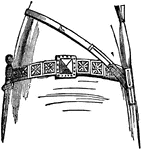
Baldrick
"A band or sash worn partly as a military and partly as a heraldic symbol. It passes round the waist…
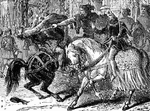
Death of Wat Tyler
Wat Tyler, while talking to the King, grew violent, forgot to whom he was speaking, and laid his hand…
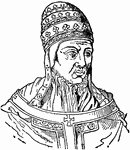
Saint Boniface
(672-754) Saint Boniface was the Apostle of the Germans, born Winfrid or Wynfrith, was a missionary…

Copper Hard Times Token, 1834
Hard Times Token (unknown) US coin from 1834.. Obverse has a left-facing image of Andrew Jackson holding…

Bronze Age Swords
Three swords from the Bronze age, each with different handles. Not drawn to scale.
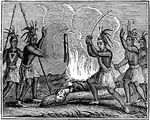
Indians and the Highlander
The Indians and the Highlander. Caption below illustration: "The Scotchman requested that the broad…
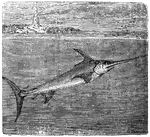
The Sword-Fish (Xiphias Gladius)
"The Sword-fish is a very formidable creature. It sometimes attains the length of five to six feet."

Lancets of the Gnat
"The gnat's sting is a sort of a sword in miniature. These have their points reversed, and are serrated…
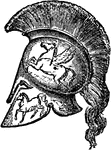
Helmet
The oldest use of helmets was by Ancient Greek soldiers, who wore thick leather or bronze helmets to…
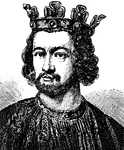
King John
John (24 December 1167 – 19 October 1216) reigned as King of England from 6 April 1199, until…
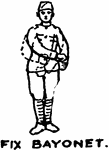
Fix Bayonet
Order give to soldiers instructing them to attach their bayonets to the end of their rifles.

Andrew Jackson
Andrew Jackson (March 15, 1767 – June 8, 1845) was the seventh President of the United States…
